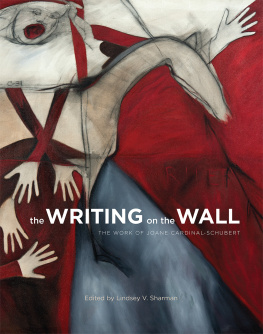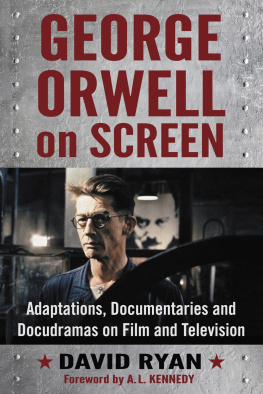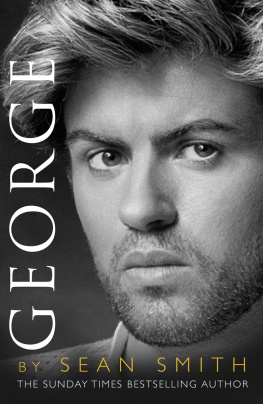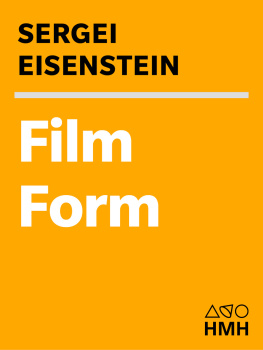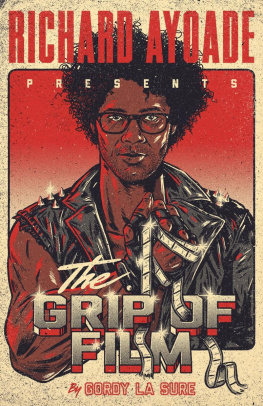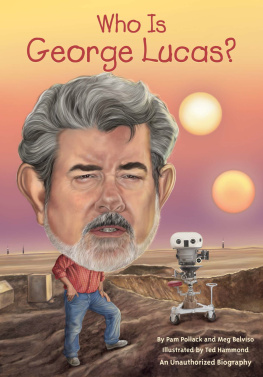FILM AND THE CITY

Copyright 2014 George Melnyk
Published by AU Press, Athabasca University
1200, 10011 109 Street, Edmonton, AB T5J 3S8
Cover and interior design by Marvin Harder, marvinharder.com.
Cover photo by Jody Shapiro.
Printed and bound in Canada by Marquis Book Printers.
doi: 10.15215/aupress/9781927356593.01
Library and Archives Canada Cataloguing in Publication
Melnyk, George, author
Film and the city : the urban imaginary in Canadian cinema / George Melnyk.
Includes bibliographical references and index.
Issued in print and electronic formats.
ISBN 978-1-927356-59-3 (pbk.). ISBN 978-1-927356-60-9 (pdf).
ISBN 978-1-927356-61-6 (epub)
1. Motion picturesCanadaHistory. 2. City and town life in motion
pictures. 3. Cities and towns in motion pictures. I. Title.
PN 1995.9.C513M44 2014 791.43658209732 C2013-905401-4 C2013-905402-2
We acknowledge the financial support of the Government of Canada through the Canada Book Fund ( CBF ) for our publishing activities.
Assistance provided by the Government of Alberta, Alberta Multimedia Development Fund.
Please contact AU Press, Athabasca University at for permissions and copyright information.
A city is not only a place but a state of mind.
Daniel Bell, The Cultural Contradictions of Capitalism
ACKNOWLEDGEMENTS
This book owes its existence to my own urban identity, my attraction to Canadian cinema, and the extensive critical commentary on the films discussed here by numerous critics, scholars, and filmmakers. The book could not have been completed without the two six-month research leaves that I was granted by the University of Calgary. These leaves allowed me the time to explore the ideas of others and to formulate my own. The work of the film studies and Canadian studies communities in Canada served as an inspiration for what might be possible.
The manuscript has gone through numerous revisions based on the comments of my peers, who shall remain anonymous and whose criticisms contributed immensely to its improvement. For several years, I have used the evolving manuscript as a text for my senior undergraduate seminar in Canadian studies at the University of Calgary. As part of their interaction with the manuscript, the students were asked to provide critiques of various claims that it made. Their insights were incorporated into my revisions.
In terms of improving the manuscript, I am particularly grateful to Pamela MacFarland Holway, senior editor at Athabasca University Press, for her intellectual engagement with the manuscripts ideas, which made me rethink a number of key aspects and arguments. I also want to acknowledge her speedy shepherding it through the approval and publication process. The copy editor for the press, Joyce Hildebrand, added clarity to my statements. She lifted my writing to a higher level of readability and lucidity, and I am deeply grateful for the numerous improvements she made. Athabasca University Press takes the editorial process seriously, and the author is the beneficiary. I am indebted as well to Elaine Melnick (no relation), who prepared the index with her usual expertise and professional timeliness.
My wife, Julia, has been gracious about my writing obsession. Her encouragement has helped me to persevere through the rough patches that accompany a manuscript as it moves from gestation, to execution, to revision. Writing this book was a long process, and her faith in me kept me going. She was also most helpful when I got bogged down in Internet research, using her skills to go further than my patience would allow, which often resulted in valuable new insights and material. I will be forever grateful for her presence.
Finally, I want to express my thanks to the filmmakers who made the films discussed in the book. I owe everything to them. Their creative genius continues to reinvigorate my belief in the power of Canadian cinema to help us define who we are.
FILM AND THE CITY
INTRODUCTION
The Urban Imaginary in Canadian Cinema
This book is a study of the focus on Canadas urban environments that has emerged in Canadian narrative cinema over the past decades. It draws its inspiration in part from another recent trend, that toward interdisciplinary approaches. In what follows, I seek to integrate insights from three well-established fieldsCanadian studies, with its ongoing exploration of national-identity formation for both individuals and collectives; film studies, which contributes concepts of genre, authorship, and audience; and urban studies perspectives on the built environment and the urban experience. Mark Shiel, co-editor of Cinema and the City, argues that interdisciplinary approaches can be profoundly useful and fruitful in addressing key issues. My goal is different: I want to link the construction of urban identity in a film text with the urban influences on the filmmaker and the films audience. Through the integration of theoretical, methodological, and empirical approaches from three different fields, I seek to move the discussion of film and the city beyond the conventional boundaries of any particular field of scholarship. By linking films and cities and analyzing how the two are related, I also hope to offer a distinctive statement about contemporary Canadian identityto clarify how Canadian urban cinema contributes both to our understanding of urban realities and to our efforts to articulate what it means to be Canadian.
The importance of the urban to recent Canadian cinema begins with the established public discourse on cities such as Toronto or Montral, which has
Perhaps because national discourses about identity promote a division between the rural and the urban that privileges the former, Canadian urban identity has come to include within itself an attraction to the rural. This attraction, rooted in the obvious absence of the much-lauded rural in Canadian urban environments, is visible in public discourse, which is often laced with disquiet about urban life and identity. I have lived my whole life in Canadian cities, yet, because of the power of the rural myth, I find that urban spaces do not measure up to my inherent sense of Canadianness. When I think of being Canadian, I think more of my experience of hiking in the Rocky Mountains or canoeing down a fast-flowing Precambrian Shield river. As an urban dweller, I am divided in my loyalties: the valorization of the nonurban environment has instilled doubts about the ultimate value and authenticity of city life. A question I attempt to answer in this book is how this ambivalence is articulated and interpreted in cinematic images of Canadian cities.
While the rural myth of Canadian national identity ignores the contribution of the urban to that identity, that same urban reality now comprises a diversity of cultures and peoples, a multiplicity of social voices and languages, and a growing sense of transnational and diasporic identities. After the conquest of New France in the eighteenth century, the attempt to promote a monolithicthat is, Anglocentricreading of Canadian national identity founded on the existence of French Canada. By advancing a geographic, rather than cultural, reading of Canadian identity, the rural myth tried to sidestep the English-French divide. The rural myth emphasizes not only the magnificence of pristine wilderness but also memories of a foundational agrarianism as defining elements of nationality. All of this is wrapped in the Eurocentric (but not necessarily Anglocentric) whiteness of a valorized settler society, whose standard heroes are European or Euro-Canadian explorersheroes who, while themselves immigrants, were nonetheless





